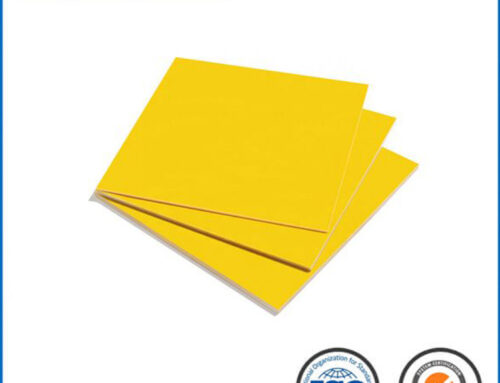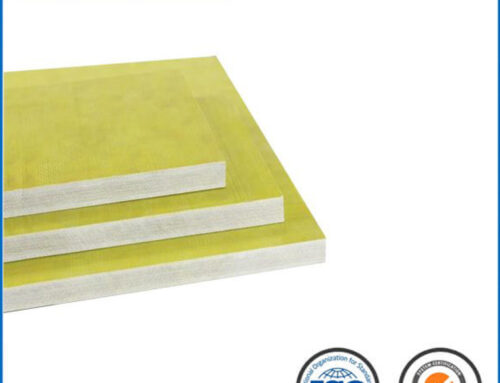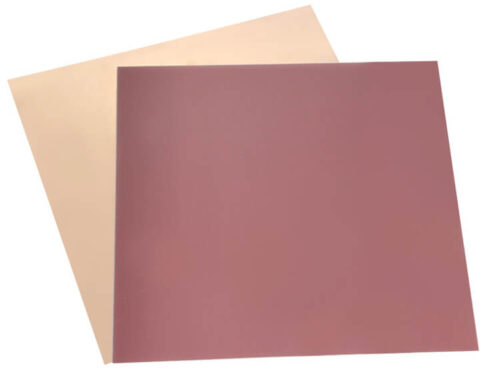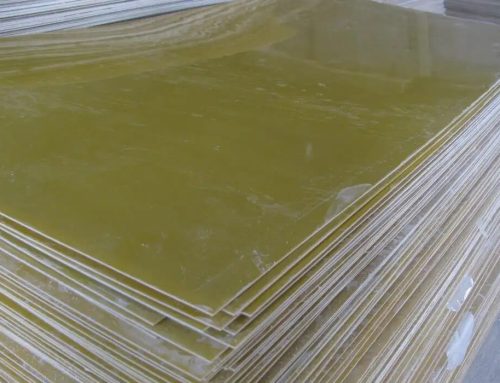1 Scope
1.1 Purpose
These tests are used as process control tools; they can be used to inspect printedboards or printed board assemblies and determine if they conform to the moniꢀtoring level of the user’s performance specification. Bulk ionic cleanliness testing may be accomplished by measuring the ionizable surface contaminants extracted by the following three methods:
1. Manual extraction method
2. Dynamic extraction method
3. Static extraction method
Note: Please note that this method does not predict reliabilꢀity and should only be used as a process control tool.
1.2 Restrictions
Measurements of ionic conductivities do not differentiate between different ionic species. They simply measure conductivities (or resistivities) which can be related to amounts of ionic materials present in solution. There is no identification of the contribution to the total conductivity readꢀings of any individual ionic species which may be extracted into the solution. For measurement of individual ionic species (type and level of residue) see IPC-TM-650, Test Method 2.3.28, Ionic Analysis of Circuit Boards, Ion Chromatography Method. For simplicity, amounts of ionic materials in solution can be expressed by a conductivity factor which is equivalent to the measured conductivity contributed by a known amount of a standard, strongly ionized salt such as sodium chloride (NaCl). Ionic residues are therefore usually expressed as equivalents of sodium chloride in micrograms per unit surface area (e.g., µg NaCl Eq./cm2 ) of the sample. This does not imply that the contamination is NaCl but, rather, it exhibits a conductivity function which is equivalent to that of the expressed amount of sodium chloride if it were in solution instead of the ionic soil. These tests will not measure any surface ionic materials which are not brought into solution because of insolubility, physical entrapment or inadequate exposure to the extracting solvent. Additionally, non-ionic components of the soil will not be meaꢀ sured.
1.3 Application
Caution should be exercised in comparing results between different test equipment as well as the differꢀent test methods. These methods are applicable as quality control tools in evaluating the parameters of materials and cleaning process, in terms of how they affect the final cleanliꢀness of the board or assembly. As process control tools, they can be used to inspect printed wiring boards or printed wiring assemblies and determine if they conform to the requirements of the user’s performance specification. It is important to understand, no calculation factor can exist to convert data from one style of commercial tester to another due to the great differences in system responses. See IPC-TR-583. This means it is very difficult to compare data from different machines. These procedures can also be used to assist in-process development as general residue indicators, to evaluate flux cleanability, solvent efficiency and general improvements of process parameters.
Note: Please note that this method does not predict reliabilꢀity and should ONLY be used as a process control tool.
2 Applicable Documents
IPC-TR-583 An In-Depth Look at Ionic Cleanliness Testing 3 Test Specimen Follow the equipment manufacturer’s recommendations as to sample size. Recommended area calꢀculations for the unpopulated printed board and printed board assembly are the following: Printed Board Surface Area = Length x Width x 2 Printed Board Assembly Surface Area = (Length x Width x 2) + (1 x up to 50% of the board area) Report the surface area used in the calculation and the perꢀcentage increased in calculating the surface area of a printed board assembly. Note: There is no universally accepted method for determinꢀing the surface area of components. However, the determinaꢀtion of surface area for components should be established iniꢀtially and used whenever that assembly style is being tested. 4 Manual Extraction Method
4.1 Description
This method describes the manual extracꢀtion of ionic material from the surface of a sample. This conꢀsists of flushing the board surface with a stream of 2-propanol/DI water mixture and carefully capturing all of theextraction solution before measuring the resistivity of the comꢀposite sample.
4.2 Test Equipment and Chemicals
4.2.1 Miscellaneous laboratory ware (e.g., beakers, funnels, storage bottles and graduated cylinders). This plastic ware can be high density polyethylene, polymethylpentene (polyꢀpentene), polypropylene or equivalent. Glassware cannot be used because it has been shown to contribute ionic contamiꢀnation in a short time with this 2-propanol/DI water solution.
4.2.2 Conductivity bridge or equivalent conductivity probe and temperature compensated liquid conductivity cell apparaꢀtus capable of measuring specific resistivities within a range covering at least 100 kΩ-cm to 20 MΩ-cm.
4.2.3 Deionization column. Up to 100% solvent compatible mixed bed or equivalent.
Note: Some of these columns are color dyed. This dye will interfere with test results. Make certain that the column used has no dye.
4.2.4 Electronic Grade 2-Propanol (isopropyl alcohol) or 99.5% purity minimum
4.2.5 Deionized water (DI water), preferably above 16 MΩ-cm water resistivity
Note: It is critical to always use wash solution with the same composition of 2-propanol/DI water for all comparative data discussions.
4.2.6 Wash solution composed of 75 ± 2% v/v 2-propanol/ DI water or 50 ± 2% v/v 2-propanol/DI water. This wash soluꢀtion must be deionized to a resistance equal to or greater than 16 MΩ-cm (conductivity less than 0.0625 µS/cm). If stored, this wash solution must be freshly deionized prior to use. Typiꢀcal resistivity of 25 MΩ-cm (conductivity of 0.04 µS/cm) can be achieved. Measurement of the 2-propanol/DI water soluꢀtion should be performed using a calibrated hydrometer. The default extract solution composition is 75 ± 2% v/v 2-propanol/DI water.
4.3 Calibration of Bridge This is essential in the manual method because there can be no correlation between resistivity/conductivity readings and NaCl equivalents without calibration. All future specification requirements are to be stated in maximum micrograms of NaCl equivalent per square centimeter (µg NaCl Eq./cm2 ).
Note: Ensure that a proper cell constant value is considered in any conductivity calculations. Check the specific conductivꢀity bridge manufacturer’s manual for this detail.
4.3.1 Prepare or purchase (these standard solutions are available from equipment vendors, as well as many of the chemical companies) a standard NaCl solution from a weight of ACS reagent grade NaCl salt dissolved in deionized water (16 MΩ-cm resistivity minimum) to produce a final diluted conꢀcentration of 0.06 g/liter NaCl (5 mL contains 300 µg NaCl).
Note: It is recommended that dry NaCl be used for this soluꢀtion. A recommended drying exposure is one hour at 105 °C or higher.
4.3.2 Place one liter of the 2-propanol/DI water solution (at the calibration temperature of the bridge in use) in a plastic beaker.
Note: The 75%/25% v/v or 50%/50% v/v 2-propanol/DI water solution must be used in this calibration. Water cannot be used since it is not the test solution used in the procedure. The test solution used in this calibration should be made fresh daily.
4.3.3 From a 50 mL burette, add to the liter of test solution, 5 mL of the standard 0.06 g/liter NaCl solution. Stir and meaꢀsure resistivity/conductivity.
Note: If the resistivity is measured, convert to conductivity by take the reciprocal, prior to plotting the data.
4.3.4 From a 50 mL burette, add to the liter of test solution, 20 additional mL of the standard 0.06 g/liter NaCl solution, for a total of 25 mL. Stir and measure resistivity/conductivity.
4.3.5 From a 50 mL burette, add to the liter of test solution, 25 additional mL of the standard 0.06 g/liter NaCl solution, for a total of 50 mL. Stir and measure resistivity/conductivity.
4.3.6 Plot a three-point nomogram of Conductivity vs. µg/liter of NaCl. A linear relationship is expected with the use of a linear regression best fit line through the data points. If a multi-range meter is used the curve should not be extended beyond the maximum reading of the meter for that range, unless linearity is proven by additional points obtained by addꢀing more standard salt solution. The nomogram will never cross the zero point of conductivity.
Note: An R2 Value of 0.99 should be expected before the instrument would be considered calibrated.
4.4 Test Procedure
4.4.1 Carefully preclean all plasticware with deionized water (16 MΩ-cm resistivity minimum) followed by a final rinse with the extraction test solution.
4.4.2 Determine the surface area per Section 3.
4.4.3 Suspend the test specimen within an appropriately sized funnel positioned over a graduated cylinder. Use clean gloves when handling the samples to be tested.
4.4.4 Prepare the extraction solution volume using a general ratio of no more than 10 mL: 1 cm2 of area. Direct a fine stream of freshly-deionized test solution on both sides of the specimen, covering all board and component surfaces. Conꢀtinue this process, slowly collecting the extraction solution. The volume collected is not critical, but the total collected volꢀume must be exactly recorded. A volume correction is made in the calculation.
4.4.5 Pour the final measured volume into a plastic ware beaker, stir and measure the resistivity/conductivity with either a bridge probe or equivalent conductivityprobe.
4.4.6 The resistivity/conductivity readings can be used to convert the µg NaCl equivalent as follows:
1. Locate where the resistivity or conductivity intersects the calibration curve on the X-axis (see Figure 1).
2. Extend a vertical line from the point of intersection to the x-axis. Read and record µg/liter NaCl (M).
3. Multiply the concentration in µg/liter NaCl by the total liters of test solution used (V). This result indicates the total µg of NaCl equivalents removed from the printed wiring board (T). T=MxV
Where:
T = the numerical value of the total amount of NaCl equivaꢀlents removed from the printed board, expressed in microꢀgram (µg);
M = the numerical value of the NaCl concentration of test solution, expressed in microgram per liter (µg/L);
V = the numerical value of the total volume of test solution, expressed in liter (L)
4. Divide the micrograms of NaCl equivalents by the area of the printed wiring board or assembly (A). This yields the conductivity factor in µg NaCl Eq./cm2.
5. T/A = µg NaCl Eq./cm2
Note: If samples read over the highest standard the sample should be diluted by a known factor, retested and calculations adjusted accordingly.
5 Dynamic Extraction Method
5.1 Description In the dynamic method, a purified 2-propanol/DI water mixture is circulated into and out of a test tank chamber containing the sample being tested. The mixꢀture exiting the test tank is passed through a conductivity cell which measures the conductivity continuously. These conducꢀtivity values are integrated over the time of the extraction. The mixture is then pumped through a resin deionization column before it is recirculated back into the test tank. As ionic mateꢀrials are extracted from the samples and then pumped out of the cell, the conductivity of the solution will change dynamiꢀcally until all of the extractable ionic material has been removed.
5.2 Test Equipment Dynamic conductivity measurement system includes a test tank, a temperature compensated conꢀductivity cell, ion exchange columns and a metering pump connected together in a recirculating loop as described in 5.1. The conductivity readings are integrated over the time of the measurement by electronic integration. The equipment may have the capability of heating the 2-propanol/DI water mixtureto accelerate extraction of ionic soils from poorly accessible places such as under surface mounted components.
5.3 Procedure
5.3.1 Solvent Systems Industry has established two different standard test solutions that are used worldwide: 75 % / 25 %, nominal v/v 2-propanol/DI water 50 % / 25 %, nominal v/v 2-propanol/DI water Select the solution required by the specification (e.g., industry standards, engineering drawing specifications, contract documentation,etc.).
5.3.2 Determine the surface area per Section 3.
5.3.3 Calibration Once the fluid in the system has estabꢀlished a stable level of conductivity, a precise quantity of a sodium chloride calibration solution is injected into the test solution in the test tank. This is done according to the calibration instructions provided by the manufacturer of the equipꢀ ment.
Note: System calibration should be verified daily, when used.
5.3.4 Testing
Once the system has been calibrated or veriꢀfied in accordance with 5.3.3, immerse the test specimen into the sample tank. The test time should be in accordance with the monitoring plan criteria (set time or auto-shutoff). Use clean gloves when handling the samples to be tested. Finger dirt contains ionic soils which may contribute to false readꢀings. During the course of the measurement, the conductivity will rise from the initial baseline level and then gradually return. When it has returned to the baseline level, no additional ionic material can be removed and the measurement is complete.
5.4 Interpretation of Test Data The number obtained from this type of measurement indicates the total amount of ionic material extracted from the entire sample in terms of equivalent amounts of sodium chloride (assuming the calibraꢀtion was done with sodium chloride). This should be divided by the total surface area of the sample from which the ions were extracted to determine the surface ionic density of the original sample.
Important Parameters The following parameters must be specified: a) Solvent composition
b) Solvent volume for static method or flow rate for dynamic method
c) Test temperature
d) Calibration of system e) Sample area calculation
f) Test time
g) Equipment type and model number The actual surface ionic density is most commonly calculated by programming the area into the instrument’s microprocessor system. The total ionic amount will then be automatically divided by the area to indicate surface ionic density in terms of micrograms of sodium chloride equivalence per unit of surface area (µg NaCl eq./cm2 ).
6 Static Extraction Method
6.1 Description In the static extraction method, a meaꢀsured volume of freshly deionized 2-propanol/DI water mixture is introduced into the test tank and its resistivity (or conductivꢀity) measured continuously while the 2-propanol/DI water mixꢀture is agitated. Once the system has been calibrated or veriꢀfied in accordance with 6.3.3 and solution has been run through the ion exchange columns, the test specimen is immersed into the tank. The test time should be in accorꢀdance with the monitoring plan criteria (set time or autoꢀshutoff). Care must be taken not to handle the sample or any of the appliances used to insert it into the tank. Finger dirt contains ionic soils which may contribute to spurious readꢀings. During the course of the measurement, the conductivity will rise from the initial baseline and then level off. When it has stabilized and no additional ionic material can be removed then the measurement is complete. After the test is completed the solvent mixture is passed through ion exchange columns to remove ionic materials and regenerate the 2-propanol/DI water solvent mixture to its original high resistivity level for further tests.
6.2 Test Equipment
A static conductivity measurement system includes a test tank, a temperature-compensated conductivity cell and monitor, means for solution agitation and a means for removing, deionizing and re-introducing the solꢀvent mixture into the test tank before a new test is started. The equipment may also have the capability of heating the 2-propanol/DI water mixture to accelerate and improve the efficiency of extraction of ionic material from poorly accessible regions, such as under surface-mounted components.
6.3 Procedure
6.3.1 Solvent Systems See 5.3.1.
6.3.2 Determine the surface area per Section 3.
6.3.3 Calibration A precise quantity of sodium chloride calibration solution is injected into a designated volume of the test solvent mixture in the sample measurement cell. This is done according to the calibration or verification instructions provided by the manufacturer of the equipment being used.
6.3.4 Testing Once the system has been calibrated or veriꢀfied in accordance with
6.3.3, the sample tank is filled as directed by the procedures of the equipment manufacturer and the test specimen is immersed in the tank. The minimum starting resistivity for this type of equipment is machine dependent. Use clean gloves when handling the samples to be tested. Finger dirt contains ionic materials which may conꢀ tribute to spurious reading. During the course of the measureꢀment, the resistivity will fall continually as ionic material is extracted into solution. If conductivity is being monitored, it will initially be very low, rising continually as ionic material is dissolved from the sample. The test can be terminated when there is no further change, in time, of the resistivity or conducꢀtivity function. This can be established electronically in most commercially available equipment. The initial and final values together with the volume of the solvent mixture in the test tank, and sample surface area are used by the system to calculate the ionic levels which were present on the sample surface prior to the test.
6.3.5 Refer to the manufacturer’s equipment manual for optimal operation.
6.4 Interpretation of Test Data See 5.4.
7 Notes
7.1 Temperature
Higher solution temperatures will result in higher levels of extracted ionic material. Most machines have calculation algorithms which incorporate the solution temperature. Refer to the machine documentation to underꢀstand how temperature affects the ionic contamination reading. For process control testing, temperature should be set at a constant value for periodic measurements. All calibrations of the equipment should be made at the same solution temperature used to run the test.
7.2 It is critical to always use test solution with the same composition of electronic grade 2-propanol (isopropyl alcohol)/DI water for all comparative data discussions.
7.3 It is also suggested that a solution blank of 5 mL of 2-propanol/DI water be run at time of calibration to determine the foundational cleanliness of the testing system.
7.4 Specific pieces of test equipment only have contamination output displays of two digits, if results are greater than or equal to 100 the actual results will be lost and only the last two digits will be displayed.
7.5 An extremely ‘‘dirty’’ sample can exceed machine maxiꢀmums. Refer to the equipment documentation to determine the maximum reading of the instrument.
8 References
IPC-TM-650, Test Method 2.3.28
Ionic Analysis of Circuit Boards by Ion Chromatography
IPC-TP-1113
Circuit Board Ionic Cleanliness Measurement: What Does It Tell Us? IPC-HDBK-001
Handbook and Guide to Supplement J-STD- 001




